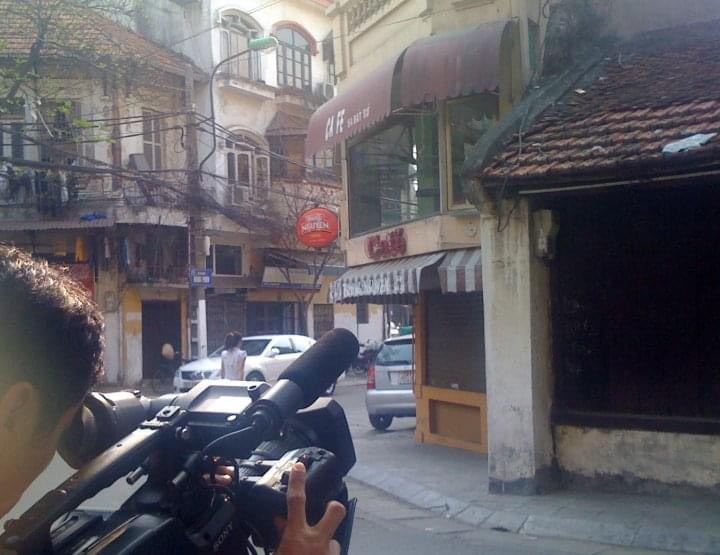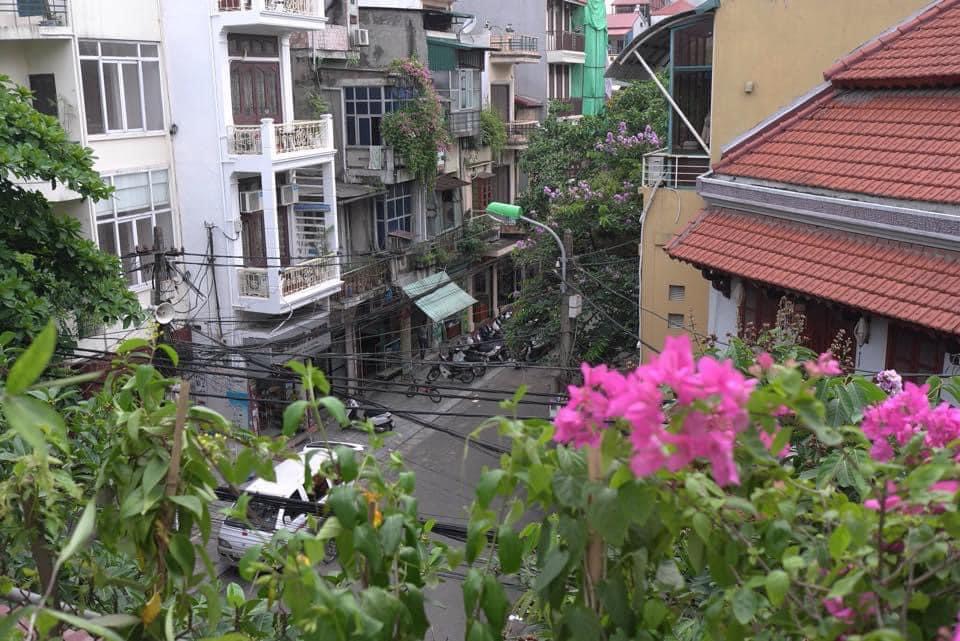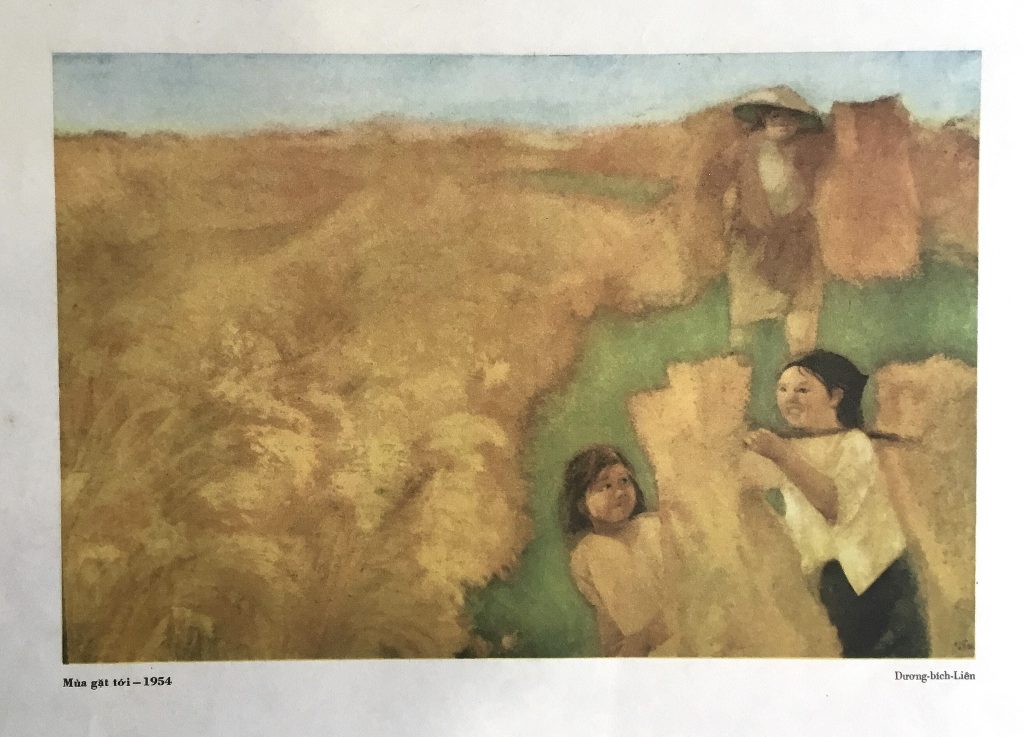(Commemorating 36 years since Bùi Xuân Phái passed away: 24/6/1988 – 24/6/2024)
In 1943, the exhibition Contemporary art of Japan – France – Indochina was organized in Tokyo, Osaka, Kobe… with the support of the Department of Information and the Ministry of Great East Asia to promote cultural exchange of France and Indochina, for the benefit of modern Franco-Indochinese artists, and to create a wide-ranging influence.
The exhibition included generations of artists who were lecturers and students of art schools in Việt Nam during that period including: Indochina Fine Arts College, Gia Định Fine Arts School and Biên Hòa Fine Arts School.
The exhibition included many famous artists. From teachers like Joseph Inguimberty, Georges Barbier, Louis Rollet, Louis Robert Bate, Nguyễn Nam Sơn to graduates like Tô Ngọc Vân, Lê Văn Đệ, Lưu Đình Khải, Nguyễn Tường Lân, Trần Văn Cẩn, Lương Xuân Nhị, Nguyễn Văn Tỵ, Nguyễn Đỗ Cung, Nguyễn Tiến Chung, Lưu Văn Sìn, Bùi Trang Chước, Trần Hà, Nguyễn Anh… In particular, the exhibition organizing committee respectfully invited three artists Nguyễn Nam Sơn, Lương Xuân Nhị and Nguyễn Văn Tỵ to Japan to attend the exhibition.

Artist Bùi Xuân Phái painting
Photo taken in 1952, courtesy of the artist’s family, artist Bùi Thanh Phương
In addition, in the exhibition catalog (part 2) there are also names and works of some students studying at Indochina Fine Arts College such as Tạ Tỵ, Trần Đình Thọ, Văn Bình, Nguyễn Sáng, Nguyễn Siên, Diệp Minh Châu, Trần Dzụ Hồng and Bùi Xuân Phái.
Artist Bùi Xuân Phái (1920-1988), class 15 (1941-1945) of Indochina Fine Arts College also had painting displayed in the exhibition. Not only that, this work is also one of the few typical works were printed in the exhibition catalog.
The descriptions is as follow:
Part 2. Number 99. Bùi Xuân Phái. The street of Vieux Marché (Old market)*. Gouache.
* It is Hàng Phèn street, the section from Thuốc Bắc street to Cửa Đông street. During the French colonial period, it was called Rue du Vieux Marché (Old Market Street).

Bùi Xuân Phái (1920-1988)
Vieux Marché Street (Old Market) – Hàng Phèn.
(Photo taken of exhibition catalogue 1943 in Japan)
Circa 1940-1943. Gouache.
Therefore, the work Vieux Marché Street (Old Market) of Bùi Xuân Phái is the oldest painting of Hà Nội streets by Bùi Xuân Phái we have known until now. Before that, his work Hàng Thiếc street, executed in 1952, was said to be his oldest work on the theme of Hà Nội old quarters.

Bùi Xuân Phái (1920-1988). Hàng Thiếc street. Oil. 1952.
Before finding information about the 1943 exhibition, Hàng Thiếc street was recognized
as the oldest work of Hà Nội old quarters painted by artist Bùi Xuân Phái.
(Courtesy of the artist’s family, artist Bùi Thanh Phương)
After discussing with artist Bùi Thanh Phương, son of artist Bùi Xuân Phái, we received the following:
“… A long time ago, Bùi Xuân Phái stood by the window of his house on Thuốc Bắc street and from this perspective, he might have painted the first street painting in his career – a painting of Hàng Phèn street, around the early 1940s. This painting was sent to an exhibition in Tokyo and the admirer immediately bought this painting in that exhibition. Maybe selling his first painting helped him continue on the path of artistic creativity while studying at Indochina Fine Arts College. He did not follow his father’s wishes, which was for Bùi Xuân Phái to follow his father’s career and become a doctor.
Every day, I – Bùi Thanh Phương still pass by this street corner. There was an image of a man that had always haunted and made a very strange impression on me from childhood until I was old, but this man was still the same, he still stood alone there, his eyes bewildered, looking at the life line going back and forth. But time has destroyed and changed everything. For a long time, every time I pass by this place, I no longer see the “strange” man and the house where he stood has been demolished to build a new high-rise hotel.”

Mr “strange” standing at the old quarter of Hàng Phèn
Courtesy of the artist’s family, artist Bùi Thanh Phương

Artist Bùi Thanh Phương guided the film crew to find exactly the quarter where Bùi Xuân Phái once stood
to paint the painting Hàng Phèn street, the view has changed a lot, but some traces still remain.
Courtesy of the artist’s family, artist Bùi Thanh Phương
There is an impressive coincidence that Bùi Xuân Phái’s first painting is a painting of Hàng Phèn Street and the last painting he created is also of Hàng Phèn street (the same quarter which Mr “strange” was standing in the photo). This painting was made on Bùi Xuân Phái’s bed in the hospital, still unfinished with the summer sun casting shadows on the street. We might remember one time he was asked, “Which of your paintings do you like the most?”
Bùi Xuân Phái replied:
“I like the unfinished, not executed, because it still gives me room to continue and hope.”

Bùi Xuân Phái (1920-1988). Hàng Phèn street. 1988. Oil.
This is the last painting that Bùi Xuân Phái created, before he passed away.
Courtesy of the artist’s family, artist Bùi Thanh Phương.
During the process of searching and researching historical documents, Viet Art View had the opportunity to access many documents containing valuable information. Sometimes we read a whole book or a thick document just to find out a little bit of information, like a person panning sand to find gold. Each bit of precious material, added gradually, sheds light on many things in the past that have been buried by time.
With only this very little bit of information, the significance is extremely great, especially in objectively identifying and evaluating the career of an famous artist like Bùi Xuân Phái.
In addition to finding information that the work Vieux Marché Street (Old Market) is the oldest work on the theme of Hà Nội old quarters that Bùi Xuân Phái created, the most important meaning is that the next generations cherish more the great affection of Bùi Xuân Phái from his youth until he left this world for Hà Nội and for his hometown.

From the window of Studio 87 looking at Hàng Phèn street. Courtesy of artist Bùi Thanh Phương

Photo taken from the window of number 87, Thuốc Bắc street looking at Hàng Phèn street
Courtesy of artist Bùi Thanh Phương
Written by Viet Art View
Copyrights belong to Viet Art View







